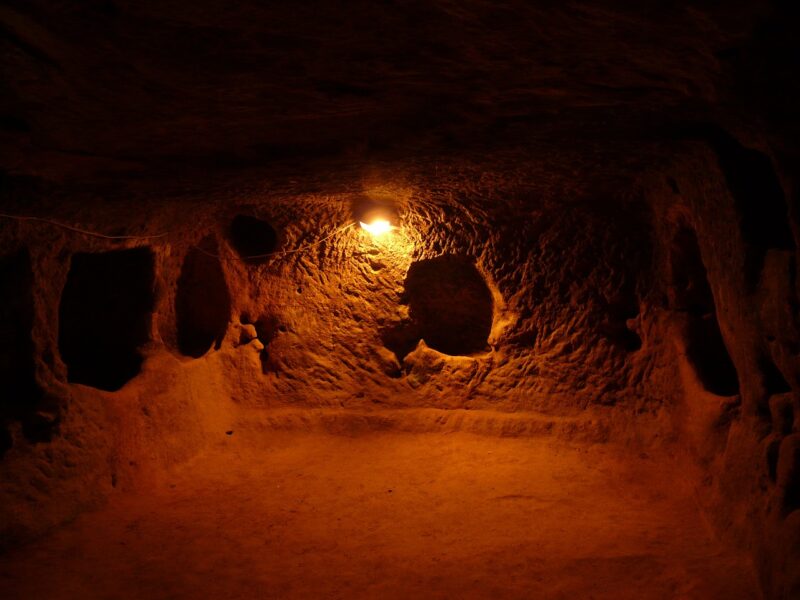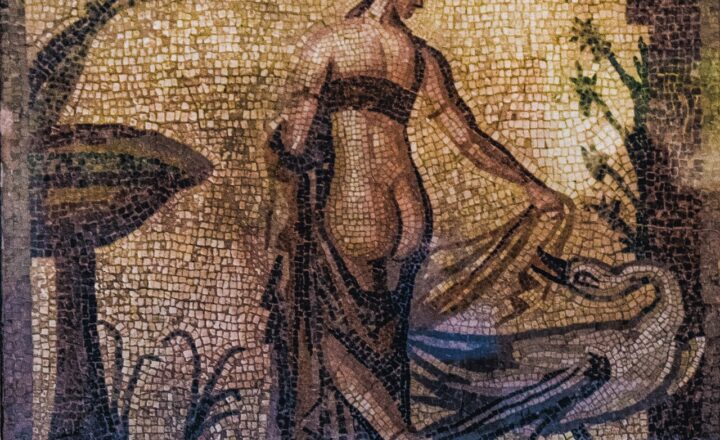How Ancient Civilizations Built Underground Cities That Defy Modern Understanding
November 17, 2024

The grandeur of ancient civilizations can be found not only above ground but also beneath our feet. **Underground cities**, built by civilizations such as the **Cappadocians** in Turkey and the **Indus Valley** peoples, present a fascinating blend of architectural ingenuity and historical mystery. These subterranean structures are more than mere shelters; they serve as testaments to the complexity and adaptability of human settlement.
### 1. The Fascination with Underground Cities
The allure of underground cities is undeniable. They provide a captivating glimpse into the past, showcasing the resourcefulness of ancient peoples in adapting to their environments. Urban areas such as **Derinkuyu** and **Kaymaklı** in Cappadocia, Turkey, exemplify this, having been excavated down to incredible depths and equipped with a blend of living spaces, storage facilities, and even religious areas.
These captivating sites challenge modern understandings of ancient lifeways, raising questions about their purposes, the cultural significance of subterranean living, and the means by which they constructed such intricate networks of tunnels and chambers.
### 2. The Origins of Underground Architecture
Underground construction dates back millennia, but it became particularly prominent in regions where environmental challenges necessitated clever solutions. Several factors prompted the development of underground cities:
– **Protection Against Invaders:** In times of conflict, subterranean complexes provided refuge from enemies, allowing inhabitants to continue living relatively undisturbed.
– **Climate Control:** Regions with extreme weather conditions utilized below-ground spaces to maintain a stable and moderate climate.
– **Natural Resource Availability:** Many underground sites were established near volcanic tuff or soft stone that was easy to excavate, yielding spaces that were both functional and secure.
### 3. Derinkuyu: A Case Study of Engineering Marvel
Located in the heart of Cappadocia, **Derinkuyu** is one of the largest and most well-known underground cities, extending over **60 meters** deep and capable of accommodating approximately **20,000** people. This astonishing city comprises multiple levels of tunnels, chambers, and ventilation shafts.
#### Key Features of Derinkuyu:
– **Multi-Level Design:** The city contains eight levels, each serving unique functions, from residential quarters to communal kitchens and wells.
– **Ventilation Systems:** Ingeniously constructed ventilation shafts ensured that fresh air circulated throughout the complex, critical for the well-being of its inhabitants during extended stays.
– **Security Features:** Large stone doors could block passages, and narrow corridors made it challenging for invaders to advance through the city.
Visiting Derinkuyu today, one is struck by the sophistication of its design and its reflection of advanced engineering techniques that still baffle experts.
### 4. The Ancient Indus Valley Civilization: A Unique Perspective
Another remarkable example of ancient subterranean living can be found within the ruins of the **Indus Valley Civilization**. Although not exactly underground cities in the same sense as Derinkuyu, settlements like **Mohenjo-Daro** displayed features such as:
– **Advanced Drainage Systems:** Mohenjo-Daro’s underground drainage helped manage waste and flooding, showcasing urban planning that was ahead of its time.
– **Subterranean Water Storage:** Water reservoirs built below the surface served significant functional roles in water conservation and agriculture, highlighting their sophisticated understanding of resource management.
The Indus Valley civilizations remind us that underground architecture has diverse expressions, influenced by various cultural contexts and practical needs.
### 5. Cultural and Religious Significance of Underground Spaces
For many ancient societies, underground cities were steeped in cultural and spiritual meanings. They often functioned as places of refuge not only physically but also spiritually:
– **Burial Sites:** Many underground complexes served dual purposes, acting as burial grounds, which reflected a belief in the afterlife or protective sanctuaries for the dead.
– **Ritual Spaces:** Some cities contained chambers for rituals and ceremonies, indicating that these locations held deep religious significance. The act of moving beneath the earth suggested a connection to other realms or ancestor worship.
##### Key Takeaway:
The layered existence of these ancient civilizations invites further exploration into the intersection of architecture, spirituality, and survival.
### 6. How Ancient Engineers Inspired Modern Architects
As contemporary architects delve into the mysteries of ancient engineering, they find inspiration derived from traditional underground designs:
– **Sustainability:** The techniques employed by ancient civilizations in building energy-efficient underground cities serve as models for modern sustainability practices.
– **Adaptation and Resilience:** Understanding how these ancient peoples adapted to their environments can inform modern design strategies in the face of climate change.
By studying the ingenuity of underground construction, architects are encouraged to embrace innovations that account for environmental factors and resource management, thus paving the way for smart, adaptable living spaces.
### 7. The Hidden Potential of Underground Spaces Today
As urbanization increases and land becomes precious, the potential of underground architecture is witnessing a resurgence. Today’s underground developments include:
– **Residential Projects:** Many cities are exploring residential options below ground, maximizing space above and enhancing urban density.
– **Commercial Ventures:** Shopping malls and leisure complexes are being designed underground, capitalizing on cooler temperatures and unique experiences.
– **Subterranean Sustainable Agriculture:** Emerging techniques are allowing for soil-less farming systems in underground spaces, breaking new ground on sustainable food production.
In conclusion, the underground cities of ancient civilizations hold keys to both practical and innovative solutions for our current urban challenges. They remind us of the depths of creativity humans have shown throughout history and offer insights that can inform our approach to creating resilient and sustainable urban environments today. The excavation of these remarkable sites is not merely an unveiling of the past; it is a call to explore potential futures beneath our feet, fostering a dialogue between history, technology, and design.
### Conclusion
The study of underground cities reveals much about the cultures that constructed them. They represent the adaptive nature of humans in challenging environments and showcase the ingenuity that continues to inspire architects and urban planners alike. Learning from these ancient civilizations can guide us toward innovative, sustainable solutions as we face our own urban challenges. Let us not forget that when we dig into history, we uncover not just the past but also the possibilities for our future.







